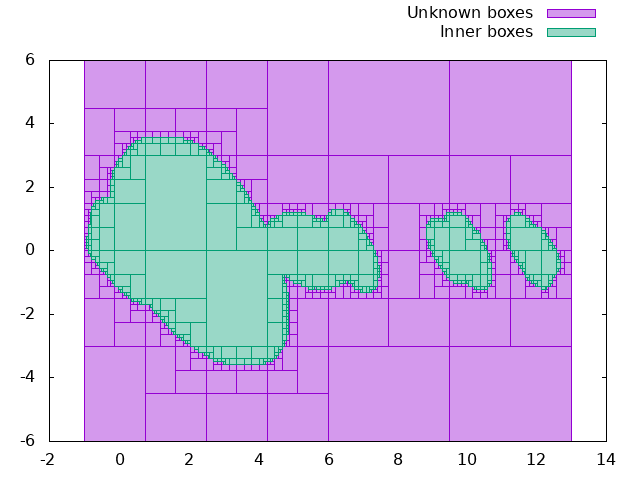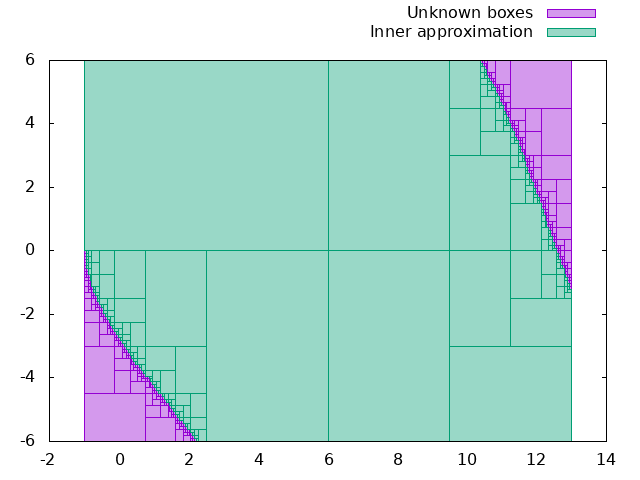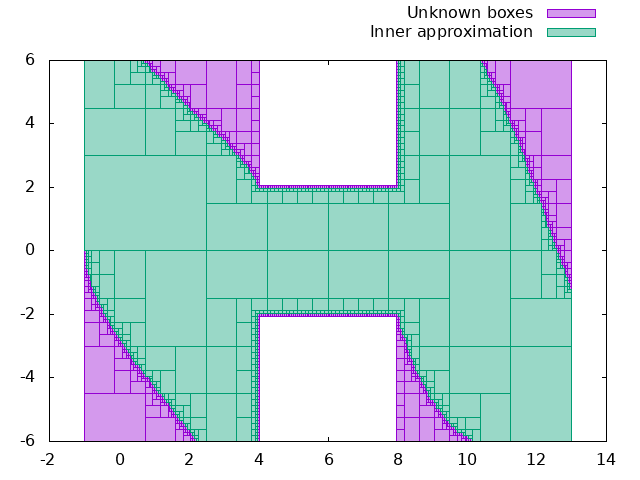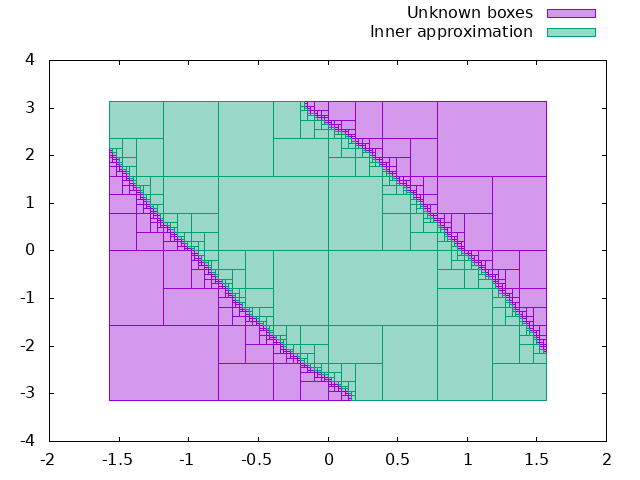
ViabKer: a Viability kernel Tool
Genesis
This page presents a tool for the computation of viability kernels named ViabKer. This tool comes without any guarantee and can't be used for industrial purpose. This tool is proposed under the LGPL license.
ViabKer is the result of two development phases, funded by two projects that followed.
First project:
The first step was to use the validated simulation and a set based approach to compute the viability kernel of a controlled system described by an ordinary differential equation. A user interface was developed by ENSTA Bretagne to provide helps in experiments.- 2015 DGA Mris: viability kernel computation with interval methods
- Publication: Dominique Monnet, Luc Jaulin, Jordan Ninin, Alexandre Chapoutot, and Julien Alexandre dit Sandretto. Viability kernel computation based on interval methods. In SWIM (Summer Workshop on Interval Methods), Prague 2015.
- Website: Viabibex
Second project:
Developments of the core of the tool was pursue in a second project. The user interface was removed for better performances and to handle higher dimensional problems.- 2016-2018 DGA Mris: Safety for Complex Robotic Systems
- Publication: Benjamin Martin and Olivier Mullier, Improving validated computation of Viability Kernels. In HSCC (Hybrid Systems: Computation and Control), Porto 2018.
- Website: HSCC 2018 sources
Team
Several people worked on these projects (main contributions, sorted by date):- Julien Alexandre dit Sandretto: core of DynIbex and required set based methods for viability kernel computations
- Dominique Monnet: ellipsoids, viability kernel computation and user interface
- Olivier Mullier: High dimensional capabilities, code optimization
- Benjamin Martin: first step based on static analysis
Installation
ViabKer uses the C++ Interval library Ibex and its extension DynIbex that provides guaranteed integration tools.-
Download: ViabKer_tool
-
Build:
$ cd ViabKer_tool
$ bash install.sh
-
Run examples
$ bash run_numerical_experiment.sh
Examples and Results
Two examples can be found in the file ViabKer_tool/ViabKer/src/main.cpp. These examples are described in the paper "Improving validated computation of Viability Kernels", HSCC 2018.-
Car On The Hill
Initial step with ellipsoids

Final: viability kernel

Final: viability kernel with forbidden zones

-
Balancing Rod
Final: viability kernel
